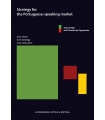Government and the International Economy, at Harvard Business School Strategy for the Portuguese-speaking market could be subtitled A Global Lusofonia Manifesto!
It echoes – in the same language – Monocle’s plea: “the rest of the world would benefit from a bit of Lusophilia”. The implied actions from Portugal’s government, business associations and universities must involve CPLP’s regional platforms and China, through the Macao Forum. Now.
Jorge Braga de Macedo - President Tropical Research Institute, Director Center for Globalization and Governance,
Nova School of Business and Economics
“For the first time in a study, three perspectives: economic, socio-cultural, and institutional are presented in an intertwined, holistic approach. This book on the Portuguese-speaking market really strikes on the complexity of decision-making, and on what must be done to turn companies successful and make States and populations prosperous.” (in Preface)
Miguel Athayde Marques - Professor of Business, Católica-Lisbon School of Business & Economics Chapter 1 – Introduction
Chapter 2 – Executive Summary
2.1. Diagnosis of the current situation
2.2. Going forward: One Vision, One Strategy, One Execution
2.3. Five critical takeaways of this book
Chapter 3 – The Portuguese-speaking market – a quick overview
Chapter 4 – Business presence across the Portuguese-speaking countries – the case of Portugal
4.1. Analyzing Portuguese exports to Portuguese-speaking countries
4.2. Analyzing Portuguese Investment in Portuguese-speaking countries (outward FDI)
4.3. Portuguese companies’ relevance in the Portuguese-speaking countries (market share)
4.4. Brazil and China: a new presence in Portuguese-speaking Africa
Chapter 5 – Comparative analysis – Portuguese-vs. Spanish-speaking market
5.1. Understanding the Portuguese-speaking countries and Latin American Economies
5.2. Economic indicators: Exports; Foreign Direct Investment; Local Presence
5.2.1. Portuguese vs. Spanish exports
5.2.2. Portuguese vs. Spanish Outward Foreign Direct Investment (FDI)
5.2.3. Portuguese vs. Spanish companies’ relevance (market-share)
5.3. Political strategy
5.3.1. Political Consensus
5.3.2. Political structure in place
5.3.3. Key takeaways from the Spanish experience approaching Latin America
Chapter 6 – Beliefs Audit – Corporate, Political and Academic experts
Chapter 7 – One Vision. One Strategy
7.1. One Vision
7.2. One Strategy
Chapter 8 – One Execution
8.1. The Economic Pillar
8.1.1. Corporate Strategy
8.1.2. Economic Diplomacy
8.1.3. Commercial Diplomacy
8.2. The Socio-Cultural Pillar
8.2.1. Language
8.2.2. Citizen mobility
8.2.3. Going beyond the Portuguese-speaking countries
8.3. The State Building Pillar
8.3.1. Help building the State
8.3.2. Relationship with International Institutions
8.3.3. Education
Chapter 9 – Risks and Challenges
9.1. Political and Institutional Risk
9.2. Portuguese-speaking countries’ resistance towards investing in other PSCs
9.3. Risks in the relation between Portugal and the Portuguese-speaking countries
9.4. Economic Risks
Chapter 10 – Final observations
Chapter 11 – List of acronyms
Chapter 12 – References
Read more













Leave a review